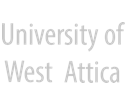Optimization of the management conditions of malolactic fermentation in red wines of the Nemea region
Abstract
Malolactic fermentation (MLF) and its impact on wine quality are often not taken into consideration in the modern Greek winemaking reality. Relatively low initial L-malic acid concentration, rarely exceeding 2.0 g/l, in conjunction with rather high pH values and warm temperatures during the winemaking period result, in most cases, in spontaneously triggered malolactic fermentations. Malic acid will be depleted by indigenous LAB and winemakers will consider “the job completed” neglecting the fact that quality and health issues have been raised by this “wild” non-controlled process. Quality issues would be mainly undesired products such as volatile acidity, diacetyl, acetoin, volatile phenols and others, where health issues would be related with biogenic amine production. Inoculation with selected Lactic Acid Bacteria (LAB) strains provides a good tool to overcome these issues provided that it is conducted in optimum conditions. Time of inoculation of LAB seems to be the most crucial factor. We have demonstrated that inoculation after the completion of the alcoholic fermentation as well as early inoculation at the beginning of fermentation improve performances but not erase problems. LAB inoculation when 50% of reducing sugars are fermented seems to be the most adapted MLF modality in the AOC Nemea region, leading to better MLF kinetic that yields higher quality end prοducts
Keywords
Malolactic fermentation, lactic acid bacteria, lysozyme, volatile acidity
DOI: 10.26265/e-jst.v3i1.578
Refbacks
- There are currently no refbacks.






